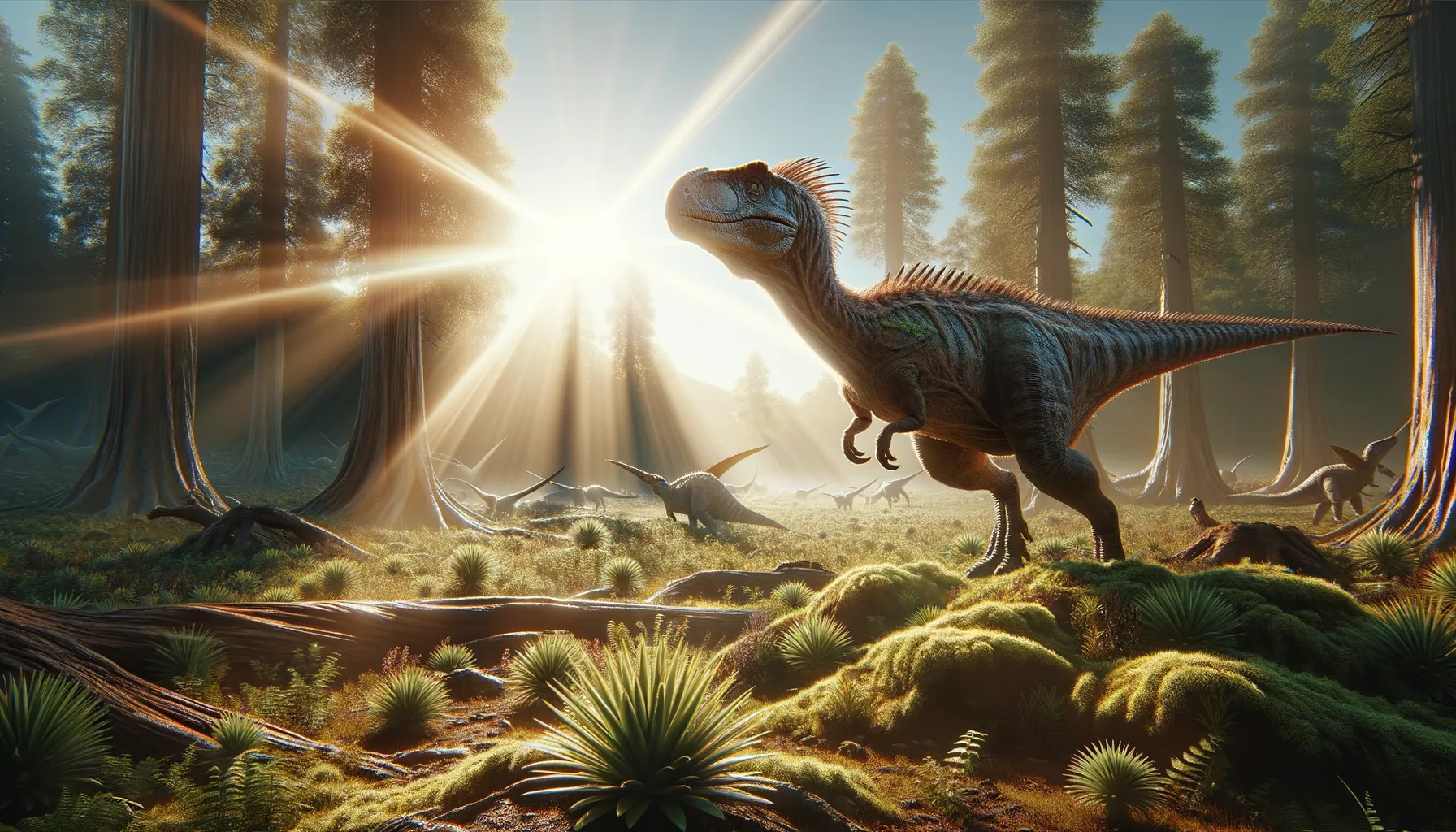
Zhongjianosaurus
Small yet swift, a prehistoric flyer!
Period
Cretaceous
Length
Around 60 cm long.
Height
Roughly 10 to 15 cm tall.
Weight
Estimated to be less than 1 kg.
Zhongjianosaurus was a small, agile dinosaur from the Cretaceous period. Known for its bird-like features, this dinosaur had adaptations that suggest it was capable of swift movements, possibly enabling it to evade predators and chase after smaller prey. Its discovery has provided insight into the evolutionary link between dinosaurs and modern birds, with its small size and light weight hinting at a lifestyle that may have included gliding or short bursts of flight.
Diet
Zhongjianosaurus likely had a carnivorous diet, feeding on insects and small animals. Its sharp teeth and quick mobility suggest it was an adept hunter, capturing prey with precision.
Hunting
This dinosaur likely hunted alone, relying on its speed and agility to catch prey. Its lightweight body would have aided in stealth and sudden movements, essential for an effective hunt.
Environmental challenges
Living in the Cretaceous period, Zhongjianosaurus faced a range of environmental challenges, from fluctuating climates to competition for food. The dense forests of ancient Asia required adept navigation skills. Predators larger than itself would have been a constant threat, necessitating keen senses and quick reflexes for survival.
Speed
It is thought to be quick for short distances.
Lifespan
Estimated between 10 and 20 years.
First discovery
Described in 2012 from fossils found in China.
Fun Facts
- Zhongjianosaurus was a tiny dinosaur, roughly the size of a crow, making it one of the smallest dinosaurs ever discovered.
- This dinosaur belonged to the troodontid family, known for their bird-like traits and relatively large brains compared to their body size.
- Fossils of Zhongjianosaurus have been found in China, offering insight into the diversity of dinosaurs in that region millions of years ago.
- The name Zhongjianosaurus is a tribute to the renowned Chinese paleontologist Zhong Jian, who made significant contributions to the field.
- Its lightweight and small size suggest that Zhongjianosaurus might have been agile, possibly using its skills to catch insects or small prey.
- Zhongjianosaurus had long legs, which indicates it could run quickly, helping it either to escape predators or capture its prey.
- This dinosaur is believed to have lived during the Late Cretaceous period, around 70 million years ago.
Growth and Development
Zhongjianosaurus likely experienced rapid growth during its early life stages, maturing quickly to gain independence. Its development probably included adaptations for flight or gliding, which required changes in bone structure and muscle development. The small size as an adult suggests a shift towards maximizing efficiency in energy use.
Habitat
This dinosaur inhabited forested regions, where its small size and light build allowed it to maneuver easily through dense vegetation. It likely used trees both for nesting and as a means to escape predators. The rich, diverse flora of the period provided ample opportunities for finding food, either hiding places or ambush sites.
Interaction with other species
Zhongjianosaurus likely interacted with a variety of other species, forming complex relationships. It may have competed with similar small predators for resources. Its presence could have also attracted larger predators, influencing its behavior and movements within its environment.
Natural lifespan
In favorable conditions, it might have lived up to two decades.
Reproduction
Zhongjianosaurus likely reproduced by laying eggs, similar to modern birds. The small size of adults suggests that clutch sizes were manageable, ensuring a higher survival rate for hatchlings. Parental care might have been present, but direct evidence for this is yet to be determined.
Social behaviour
It's possible that Zhongjianosaurus displayed both solitary and coopertive behavior depending on the context. Banding together could have deterred predators, while solitary habits allowed for focused hunting. Their communication might have included visual displays or calls, akin to birds.
Fossil locations
Fossils of Zhongjianosaurus have been predominantly found in Liaoning Province, China, a region known for well-preserved feathered dinosaur fossils. These sites have provided crucial insights into the small theropods of the Cretaceous period, including evidence of early avian evolution.
